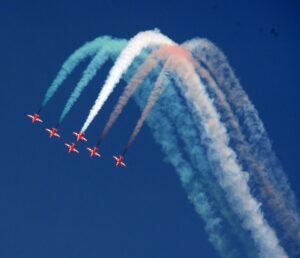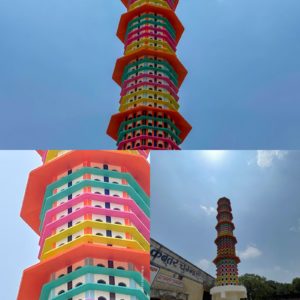Jaipur, also known as the Pink City, is famous worldwide for its rich culture and historical landmarks. One such historical gem is the Jaigarh Fort, situated atop a hill called “Cheel Ka Teela.” This magnificent fort is also referred to as the “Victory Fort of Rajasthan” and is the most formidable fort among the three hilltop forts in Jaipur. Located at an altitude of 400 meters above the Amber Fort, Jaigarh Fort attracts tourists with its grand gateways and captivating attractions, including the Jaivan, the world’s largest cannon on wheels with a 20-feet barrel.

The Jaigarh Fort, also known as the Victory Fort, reflects the splendid heritage of the Mughal era. It was constructed in 1726 by Sawai Jai Singh II and Mirza Raja Jai Singh. Perched on the Cheel ka Teela in Jaipur, Rajasthan, this magnificent palace was designed by the architect Vidyadhar, showcasing the royal culture of Jaipur.
The fort has an intriguing history behind its construction. The renowned Jaigarh Fort was built during the early 18th century when the Kachawahas ruled the city of Amer, where both Jaigarh and Amer Forts are located. During the Mughal period, Jaigarh Fort served as the primary cannon foundry for the rulers. It was utilized for storing ammunition and other metal resources required for warfare. Initially, Dara Shikoh was responsible for overseeing the fort, but after being defeated by his own brother, Aurangzeb, the fort was handed over to Raja Jai Singh II, from whom it derived its name. It is believed that Raja Jai Singh II used innovative techniques and foundries to cast the colossal ‘Jaivana Cannon,’ which remains the main attraction of Jaigarh Fort to this day.

The beautiful Fort was constructed using thick walls of red sandstone and spans a vast area of 3 kilometers in length and 1 kilometer in width. Among its many attractions, the most popular ones include Jaivana, Vijay Garh, the Museum, and Lakshmi Vilas Palace. The Jaivana Cannon, the world’s largest cannon on wheels, weighing 50 tons and boasting an 8-meter barrel, is housed within Jaigarh Fort. It requires four enormous elephants to rotate it around its axis.

Another noteworthy attraction is the famous Vijay Garh, which served as the primary armory within the fort. To learn about the complete story of Jaigarh Fort, a visit to the fort’s museum is a must. The museum features a gallery of Rajput relics, photographs of Maharajas, structures, and parades. The Lakshmi Vilas Palace showcases exquisitely carved walls and beautiful paintings. The palace also includes a small theater hall that was used by the kings to host entertainment shows such as dances and singing concerts. The fort is also adorned with remnants of ancient Mughal gardens.

Other attractions within the Fort include Lalit Mandir, Aram Mandir, and the Vilas Mandir. High walls encompass the fort from all sides, and the central watchtower offers breathtaking views of the surrounding landscape. A secret passage connects Jaigarh Fort to its neighboring Amber Fort, created for emergency escapes of women and children. Additionally, the central water reservoir within the fort provides water to the Amber Fort.

Nearby attractions to Jaigarh Fort : Amber Fort, Vijay Garh, and the Aravalli Hills.
To reach Jaigarh Fort, you can opt for a taxi or cab according to your convenience. Frequent bus services are also available for those preferring public transportation.
Timings: 9:00am-5:00pm



